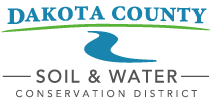
FARMLAND
Approximately one-half of the land in Dakota County is farmland.
The Dakota County SWCD provides financial and technical assistance for the management of agricultural resources to landowners, cities, townships, and Dakota County. We assist landowners with activities such as identifying buffer areas, designing waterways, and installing water and sediment control basins and cover crops. We assist local government with planning, land and water protection programs and the county Farmland and Natural Areas Program.
Click on the categories [+] below to expand and learn more about these specific areas.
 Cover crops are used to accomplish many goals such as reducing compaction, fixing nitrogen, suppressing weeds, reducing erosion, or providing additional forage. Common cover crops in Dakota County are cereal rye, oats, tillage radish, clover, and winter wheat. One or more cover crop species may be selected based on specific goals. Dakota SWCD staff can help create a cover crop seeding plan with producers’ goals in mind. Staff can also provide technical assistance and information on planting methods, termination timing, and herbicide and pest control decisions.
Cover crops are used to accomplish many goals such as reducing compaction, fixing nitrogen, suppressing weeds, reducing erosion, or providing additional forage. Common cover crops in Dakota County are cereal rye, oats, tillage radish, clover, and winter wheat. One or more cover crop species may be selected based on specific goals. Dakota SWCD staff can help create a cover crop seeding plan with producers’ goals in mind. Staff can also provide technical assistance and information on planting methods, termination timing, and herbicide and pest control decisions.
Apply under the Incentive Payment Practices Program and producers could be eligible to receive:
- $35 per acre under a 1-year contract (max $2,500 or 100 acres)
- $45 per acre per year under a 3-year contract (max $10,500 or 100 acres)
Applications are accepted year-round.
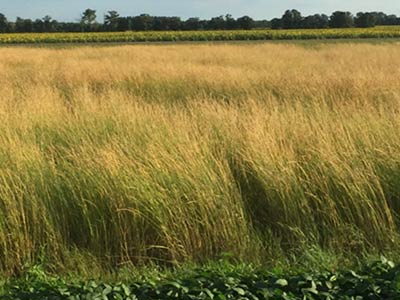 Harvestable covers are vegetative cover on cropland for protection from erosion and reduction of nutrient losses to groundwater. Harvestable covers are intended to provide soil and groundwater protection throughout as much of the year as possible. Harvestable covers allow for harvesting of a crop, which can provide income while protecting water resources. Examples of harvestable covers include winter camelina, intermediate wheat grass, winter wheat, or other crops that provide overwinter cover. One or more crop species may be selected based on specific goals. Apply under the Incentive Payment Practices Program and you could be eligible to receive:
Harvestable covers are vegetative cover on cropland for protection from erosion and reduction of nutrient losses to groundwater. Harvestable covers are intended to provide soil and groundwater protection throughout as much of the year as possible. Harvestable covers allow for harvesting of a crop, which can provide income while protecting water resources. Examples of harvestable covers include winter camelina, intermediate wheat grass, winter wheat, or other crops that provide overwinter cover. One or more crop species may be selected based on specific goals. Apply under the Incentive Payment Practices Program and you could be eligible to receive:
- $25 per acre under a 1-year contract using a winter annual (max $2,000 or 100 acres)
- $35 per acre per year under a multi-year contract using a winter annual (max $12,500 or 100 acres)
- $35 per acre per year under a multi-year contract using a perennial (max $12,500 or 100 acres)
A field is eligible for a maximum of 5 years of incentive payments. Applications are prioritized for funding based on their potential to provide surface water and groundwater benefits. Applications are accepted year-round.
For additional information, please contact Ashley Gallagher at 651-480-7781 / Email: Ashley
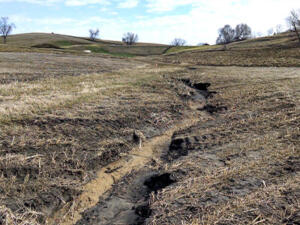 The Dakota County Soil and Water Conservation District (SWCD) offers technical and financial assistance to agricultural producers for the establishment of conservation management practices. Practices are applied to reduce soil erosion caused by water or wind and may be changes in the of a farming operation or construction of a structural practice. Practices also benefit local water bodies by reducing damage from sediment and runoff.
The Dakota County Soil and Water Conservation District (SWCD) offers technical and financial assistance to agricultural producers for the establishment of conservation management practices. Practices are applied to reduce soil erosion caused by water or wind and may be changes in the of a farming operation or construction of a structural practice. Practices also benefit local water bodies by reducing damage from sediment and runoff. 
Conservation Tillage
Conservation tillage is an example of a management practice that helps protect the soil surface and increase soil organic matter. This is done by reducing soil disturbance from tillage and leaving more crop residue on the soil surface.
Grassed Waterways and Diversions
These are a few examples of 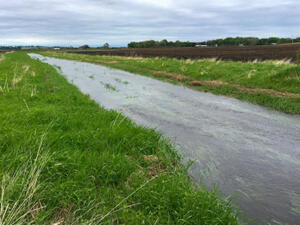 structural practices that could be installed where water flows. The shaping of the soil and establishment of vegetation reduces soil loss and prevents gullies from forming.
structural practices that could be installed where water flows. The shaping of the soil and establishment of vegetation reduces soil loss and prevents gullies from forming.
Water and Erosion Control Structures
This is an example of a structural practice used to temporarily hold back water, slow the flow of the water, and therefore reduce soil loss. Water is typically routed through a pipe or tile line that outlets in a more stable area. 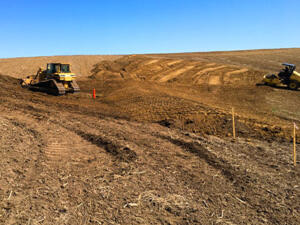
Apply under the Incentive Payment Practices Program and applicants could be eligible to receive:
- Up to 85% cost-share of the total project
Applications are accepted year-round but batched and reviewed on quarterly deadlines.
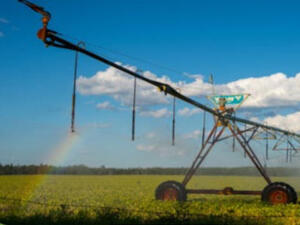 Irrigation scheduling can reduce demand on groundwater and manage water in the root zone to reduce loss of nutrients. Dakota SWCD staff can assist producers with irrigation scheduling using the checkbook method and web-based scheduling programs. By partnering with State agencies, Dakota SWCD can provide weather data that is useful for irrigation scheduling. The weather station for Dakota County is located just South of Hastings.
Irrigation scheduling can reduce demand on groundwater and manage water in the root zone to reduce loss of nutrients. Dakota SWCD staff can assist producers with irrigation scheduling using the checkbook method and web-based scheduling programs. By partnering with State agencies, Dakota SWCD can provide weather data that is useful for irrigation scheduling. The weather station for Dakota County is located just South of Hastings.
Irrigation Management Assistant (IMA) Tool
This online tool allows for a more automated approach to irrigation scheduling. All parameters besides irrigation events are automatically loaded based upon the field location, though inputs can be manually entered if desired. The tool then recommends when to irrigate based on the field water balance. All data is private and users can set up their own accounts and fields. SWCD staff are available to assist with getting started however there is also a User Guide (link to PDF either in text or as a button). The tool is located at Irrigation Management Assistant.
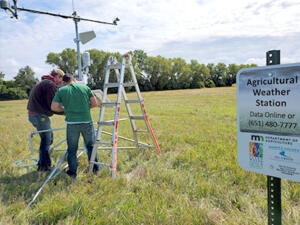 Hourly Weather Station Data
Hourly Weather Station Data
Access the following data directly via the NDAWN network: hastings.ndawn.org
- Air Temperature
- Dew Point
- Wind Speed and Direction
- Rainfall Amounts
- Evapotranspiration
- Soil Temperature
- Bare and Turf Inversion Sensor
Project partners: Minnesota Department of Agriculture (MDA), North Dakota Agricultural Weather Network (NDAWN) & Dakota County.
For information on Irrigation Water Management or the Weather Station, please contact Ashley Gallagher at 651-480-7781 / Email: Ashley
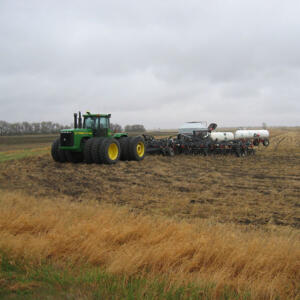 Dakota SWCD staff can connect producers to technical and financial resources related to nutrient management. This includes both commercial fertilizer and manure. SWCD staff can provide assistance on University of Minnesota (UMN) guidelines for fertilizer rates, Best Management Practices (BMPs) for the Minnesota Department of Agriculture Groundwater Protection Rule and a variety of nutrient management tools including inhibitors, precision technology and more.
Dakota SWCD staff can connect producers to technical and financial resources related to nutrient management. This includes both commercial fertilizer and manure. SWCD staff can provide assistance on University of Minnesota (UMN) guidelines for fertilizer rates, Best Management Practices (BMPs) for the Minnesota Department of Agriculture Groundwater Protection Rule and a variety of nutrient management tools including inhibitors, precision technology and more.
For further information on specific topics, visit our partner’s websites:
Groundwater Protection Rule for Hastings Drinking Water Supply Management Area (DWSMA) (https://www.mda.state.mn.us/hastings-dwsma)
Nutrient Management Initiative (NMI) (https://www.mda.state.mn.us/protecting/cleanwaterfund/onfarmprojects/nmi)
University of Minnesota Fertilizer Guidelines
(https://extension.umn.edu/nutrient-management/crop-specific-needs)
SWCD occasionally partners with University of Minnesota (UMN) to offer the Nitrogen Smart Course. Check back for future schedule or email Ashley.Gallagher@co.dakota.mn.us to be placed on a distribution list. This course is also offered online: https://extension.umn.edu/courses-and-events/nitrogen-smart
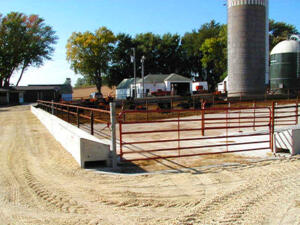 There are many programs that provide technical and financial assistance to livestock producers. Dakota SWCD Staff can help producers navigate through these programs as well as direct them to the appropriate organization. There are also various regulatory programs that apply to some livestock operations. Dakota SWCD does not administer any regulatory programs for livestock. The appropriate contacts for some livestock related programs are listed here:
There are many programs that provide technical and financial assistance to livestock producers. Dakota SWCD Staff can help producers navigate through these programs as well as direct them to the appropriate organization. There are also various regulatory programs that apply to some livestock operations. Dakota SWCD does not administer any regulatory programs for livestock. The appropriate contacts for some livestock related programs are listed here:
FEEDLOTS:
Beginning in 2017, all feedlot registrations and permitting moved from the Dakota County Soil & Water Conservation District (SWCD) to the Minnesota Pollution Control Agency (MPCA). Please visit their website. or contact the MPCA at 651-296-6300 for assistance.
For information on feedlots registered through the SWCD prior to 2017, please call us at 651-480-7777.
MANURE MANAGEMENT:
For information on Manure Management, please visit the Natural Resources Conservation Service (NRCS) website. Click Here.
The local Dakota County NRCS office can be contacted at 651-463-8626 ext 3.
PASTURE MANAGEMENT:
For information on Pasture Management please visit the Natural Resources Conservation Service (NRCS) website. Click Here.
The local Dakota County NRCS office can be contacted at 651-463-8626 ext 3.
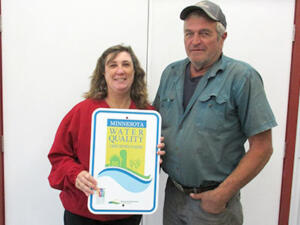 The Minnesota Agricultural Water Quality Certification Program (MAWQCP) is a statewide program administered by the Minnesota Department of Agriculture (MDA). This is a voluntary opportunity for farmers and agricultural landowners to take the lead in implementing conservation practices that protect our water.
The Minnesota Agricultural Water Quality Certification Program (MAWQCP) is a statewide program administered by the Minnesota Department of Agriculture (MDA). This is a voluntary opportunity for farmers and agricultural landowners to take the lead in implementing conservation practices that protect our water.
Through this program, certified producers receive:
- Regulatory certainty: certified producers are deemed to be in compliance with any new State or Federal water quality rules or laws during the 10-year certification period. Compliance with existing or new local ordinances is still required.
- Recognition: certified producers receive recognition with a sign and may use the certification to promote their business as being responsive to protecting water quality.
- Priority technical assistance: producers seeking certification can obtain specially designated technical and financial assistance from the Dakota County Soil and Water Conservation District (SWCD) and Natural Resources Conservation Service (NRCS) to implement practices that promote water quality.
Dakota SWCD staff can assist producers with the application and start the whole-farm assessment. More detailed information on the program is on the MDA website HERE or contact Ashley Gallagher at 651-480-7781 / Email: Ashley
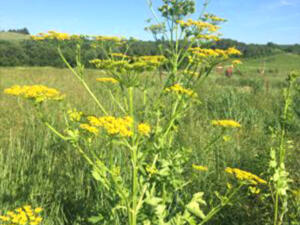 A noxious weed, as defined by Minnesota Law, is an annual, biennial, or perennial which is deemed by the Minnesota Department of Agriculture (MDA) to be injurious to public health, public roads, environment, crops, livestock, and other property. The highest priority noxious species in Dakota County due to public concern and interest include wild parsnip, leafy spurge, spotted knapweed and Palmer amaranth. Garlic mustard, narrowleaf bittercress, Japanese hedge parsley, and common or European buckthorn were identified in the northern half of Dakota County as a species of concern.
A noxious weed, as defined by Minnesota Law, is an annual, biennial, or perennial which is deemed by the Minnesota Department of Agriculture (MDA) to be injurious to public health, public roads, environment, crops, livestock, and other property. The highest priority noxious species in Dakota County due to public concern and interest include wild parsnip, leafy spurge, spotted knapweed and Palmer amaranth. Garlic mustard, narrowleaf bittercress, Japanese hedge parsley, and common or European buckthorn were identified in the northern half of Dakota County as a species of concern.
The Dakota SWCD is contracted to serve as the County Agricultural Inspector (CAI). The CAI serves as the primary technical support to the local weed inspectors. The local weed inspectors are the supervisors of each township board and the mayor of each city within their respective municipalities. Dakota SWCD Staff can assist with identification and education on noxious weeds, as well as the noxious weed law.
For more information about the County Agricultural Inspector Program, please contact:
Todd Matzke at 651-480-7780 or Email Todd or for additional information or visit MDA website.
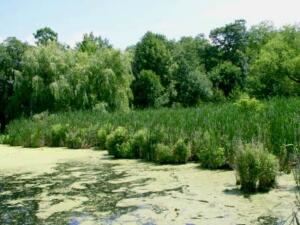 A Cooperative Weed Management Area (CWMA) is a formal partnership developed between landowners, government agencies and organizations with the goal of managing invasive plants across jurisdictional and land ownership boundaries through a defined plan. The CWMA develops a plan that establishes a defined work area where local units of government, state and federal agencies, and citizens pool resources and work together to address invasive species problems. With a grant funded from the Minnesota Board of Soil and Water Resources (BWSR), the Dakota County SWCD worked with partners to organize the Dakota County Cooperative Weed Management Area. All cities, townships, state, and federal agencies, as well as railroad companies, are encouraged to participate in the CWMA as Partners or Cooperators. Partners sign a formal agreement or Memorandum of Understanding (MOU) which outlines partner expectations.
A Cooperative Weed Management Area (CWMA) is a formal partnership developed between landowners, government agencies and organizations with the goal of managing invasive plants across jurisdictional and land ownership boundaries through a defined plan. The CWMA develops a plan that establishes a defined work area where local units of government, state and federal agencies, and citizens pool resources and work together to address invasive species problems. With a grant funded from the Minnesota Board of Soil and Water Resources (BWSR), the Dakota County SWCD worked with partners to organize the Dakota County Cooperative Weed Management Area. All cities, townships, state, and federal agencies, as well as railroad companies, are encouraged to participate in the CWMA as Partners or Cooperators. Partners sign a formal agreement or Memorandum of Understanding (MOU) which outlines partner expectations.
The Dakota County SWCD maintains a roster of participating CWMA partners and cooperators. The CWMA has identified wild parsnip, leafy spurge, spotted knapweed and Palmer amaranth as highest priority species due to public concern and interest. Garlic mustard, narrowleaf bittercress, Japanese hedge parsley, and common or European buckthorn were identified in the northern half of Dakota County as species of concern.
For more information about the Dakota County Cooperative Weed Management Area, please contact Todd Matzke at 651-480-7780 / Email: Todd
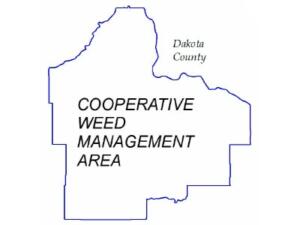
CWMA PLAN
CWMA Memorandum of Understanding (MOU)
CWMA Roster

URBAN
Urbanization is the changing of land use from forest or agricultural uses to suburban and urban areas.
This conversion is proceeding in Dakota County at a rapid pace, and most of the county’s population now lives in suburban and urban areas. The creation of impervious surfaces that accompanies urbanization affects how water moves both above and below ground during and following storm events, the quality of that stormwater, and the ultimate condition of nearby rivers, lakes, and wetlands.
Approximately one-half of Dakota County is now developed and considered urban. The Dakota County SWCD administers many programs that provide technical and financial assistance to cities, homeowners, and businesses to minimize the impact of stormwater runoff from new and existing development.
For more information contact Joe Barten: Phone: 651-480-7784 Email: Email Joe
Click on the categories [+] below to expand and learn more about these specific areas.
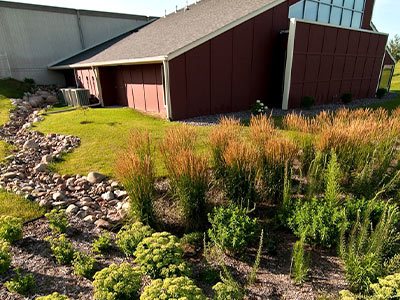
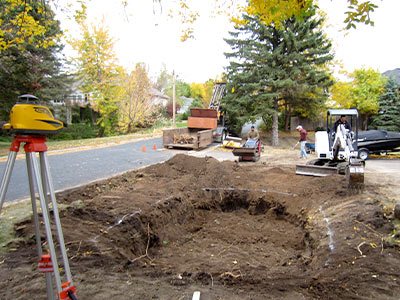

The Dakota County Soil and Water Conservation District staff use the Conservation Initiative Funding (CIF) program to connect citizens, developers and local government with the educational, technical, and financial support needed to install innovative stormwater management and conservation practices.
Different types of stormwater best management practices that improve and protect water quality will qualify for this program, including:
- Raingardens
- Bioretention
- Infiltration
- Filtration
- Shoreline protection
FUNDING SOURCES
Conservation Initiative Funding
Up to $25,000 (or 85% of the cost of the project) in grant funding may be available to install conservation practices that reduce stormwater runoff and improve water quality. Funding is dependent on project location, available funding, and project water quality benefits. Funding cannot be provided for projects required by regulation.
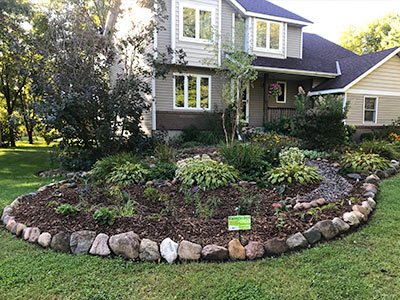
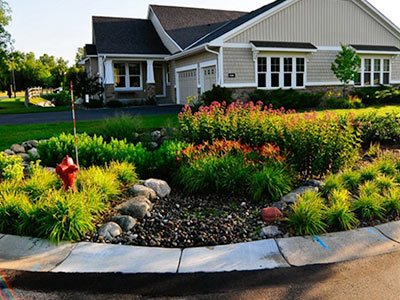

The Dakota County Soil and Water Conservation District staff use initiatives such as Landscaping for Clean Water (LCW), Citizen Conservation Stewards (CCS) and Conservation Initiative Funding (CIF) to connect citizens, multiple property Home Owner Associations (HOAs) and local governments with the educational, technical and financial support needed to install innovative stormwater management and conservation practices.
Different types of stormwater best management practices that improve and protect water quality will qualify for this program, including:
- Raingardens
- Shoreline restoration projects
- Sever erosion repair projects
Landscaping for Clean Water
Beginning with the Introduction to Clean Water class, participants learn about conservation issues and are then invited to enroll in our Design Class where they’ll design a raingarden, native garden, or native shoreline planting for their yard, and have the opportunity to apply for a $250 grant to assist with installation costs.
Citizen Conservation Stewards
Up to $5,000 (or 85% of the cost of the project) in grant funding may be available to install conservation practices that reduce stormwater runoff and improve water quality. Funding is dependent on project location, available grant dollars, and project water quality benefits. Funding cannot be provided for projects required by regulation.
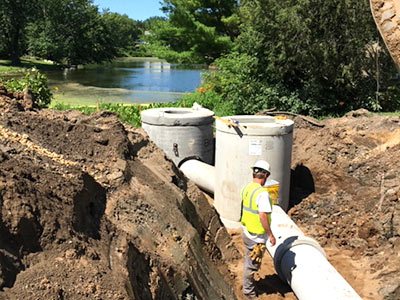
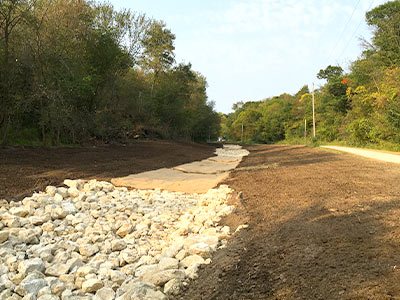
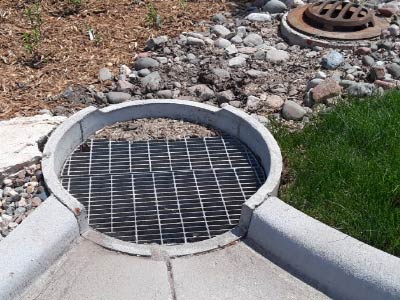
The Dakota County Soil and Water Conservation District staff use the Community Conservation Partnership (CCP) program to connect local government with the technical, and financial support needed to install innovative stormwater management and conservation practices.
Different types of stormwater best management practices that improve and protect water quality will qualify for this program, including:
- Raingardens
- Bioretention basins
- Infiltration & Filtration basins
- Shoreline protection
- Underground swirl-separator chambers
- Iron-enhanced sand filters
FUNDING SOURCES
Community Conservation Partnership
Up to $50,000 (or 85% of the cost of the project) in grant funding may be available to install conservation practices that reduce stormwater runoff and improve water quality. Funding is dependent on project location, connection to TMDL goals, available funding, and project water quality benefits. Funding cannot be provided for projects required by regulation.
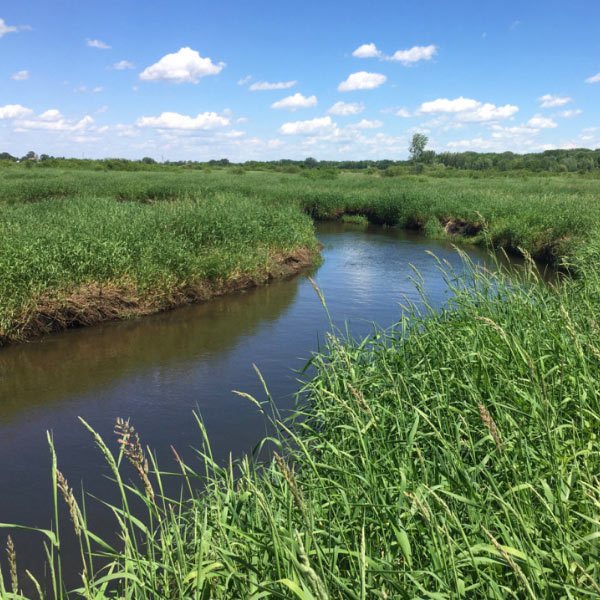
NATURAL AREAS & BUFFERS
Protect natural areas, water quality and open space for future generations.
The Dakota County Soil and Water Conservation District (SWCD) works with landowners who are interested in improving water quality and enhancing wildlife habitat on their property. There are a variety of county, state, and federal assistance programs available to landowners to achieve these goals, and general information about these programs is provided below. Please contact the Dakota County SWCD to help determine which program may best suit your needs.
Click on the categories [+] below to expand and learn more about these specific areas.
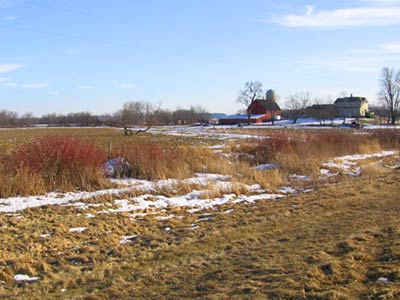
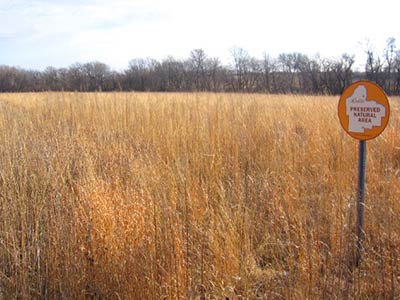
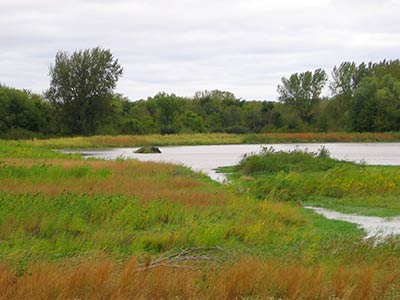
DAKOTA COUNTY
Conservation Easements
A conservation easement is a set of restrictions a private landowner voluntarily places on their property to preserve its conservation value forever. Each conservation easement is unique, specifically tailored to the conservation values of the land and to the particular situation of the landowner. Conservation easements can protect a variety of land, including the shoreline of lakes, rivers, and streams; wildlife habitat; productive agricultural or forestry lands; scenic areas; public trails; and other open land. Conservation easements must provide public benefits, such as water quality, farm and ranch land preservation, scenic views, wildlife habitat, outdoor recreation, education, and historic preservation.
The conservation values of the property and the restrictions created to preserve those values, along with the rights reserved by the landowner, are detailed in a legal document known as a conservation easement deed. Within the deed, the conservation values of the land are defined, and restrictions are created to protect those values. Typically, easements prohibit residential, commercial, or industrial uses, construction of buildings or roads, utilities, disturbance of the vegetation or topography, and any activities on the property that might interfere with the conservation purposes for the easement. The restrictions apply to the current owner and all future landowners, permanently protecting the property. Landowners have cited the following reasons for selling a conservation easement:
- Receiving a cash payment without having to sell their land
- Protecting natural areas, water quality and open space for future generations
- Preserving land as a treasured family legacy
- Providing and enhancing wildlife habitat – especially for unique species
- Receiving cash to pay taxes and other expenses
- Employing a strategy to potentially reduce property and income taxes
- Being eligible for additional public natural resource restoration funding
For additional information on Dakota County Conservation Easements. CLICK HERE.
MINNESOTA BOARD OF SOIL & WATER RESOURCES (MN BWSR)
Conservation Reserve Enhancement Program (MN CREP)
MN CREP is a voluntary, federal and state funded natural resource conservation program that uses a science based approach to target environmentally sensitive land in 54 Counties in southern and western Minnesota. This is accomplished through permanent protection by establishing conservation practices via payments to farmers and agricultural landowners.
Here’s how it works:
- Landowners enroll in the federally funded Conservation Reserve Program (CRP) for 14-15 years.
- CRP is administered by the USDA-Farm Service Agency (FSA). It uses agricultural land for conservation benefits, rather than farming or ranching.
- The same land is also enrolled into a state-funded perpetual conservation easement through the Reinvest in Minnesota (RIM) Reserve program, administered by the Minnesota Board of Water and Soil Resources (BWSR).
- Private ownership continues and the land is permanently restored and enhanced for conservation benefits.
For more information on the CREP program CLICK HERE.
REINVEST IN MINNESOTA (RIM)
Reinvest in Minnesota (RIM) Reserve program is a critical component of the state’s efforts to improve water quality by reducing soil erosion, and phosphorus and nitrogen loading, and improving wildlife habitat and flood attenuation on private lands. RIM Reserve is implemented in cooperation with county SWCDs. The RIM Reserve program compensates landowners for granting conservation easements and establishing native vegetation habitat on economically marginal, flood-prone, environmentally sensitive, or highly erodible lands. The program protects the state’s water and soil resources by permanently restoring wetlands, adjacent native grassland wildlife habitat complexes and permanent riparian buffers. The BWSR acquires, on behalf of the state, conservation easements to permanently protect, restore and manage critical natural resources without owning the land outright. The land remains in private ownership and the landowner retains responsibility for maintenance and paying applicable real estate taxes and assessments. BWSR provides statewide program coordination and administration and implementation at the local level is done by county Soil & Water Conservation Districts (SWCDs). The RIM Reserve program is the primary land acquisition program for state held conservation easements and restoration of wetlands and native grasslands on privately owned land in Minnesota. This program partners with public and private landowners, state, federal and local government entities, non-profit organization and the citizens of Minnesota. For more information on the RIM program CLICK HERE.
FEDERAL ASSISTANCE
United States Department of Agriculture (USDA) / Natural Resources Conservation Service (NRCS)
CONSERVATION RESERVE PROGRAM (CRP)
The Conservation Reserve Program (CRP) provides technical and financial assistance to eligible farmers and ranchers to address soil, water, and related natural resource concerns on their lands in an environmentally beneficial and cost-effective manner. The program aids farmers and ranchers in complying with Federal, State, and tribal environmental laws, and encourages environmental enhancement. The program is funded through the Commodity Credit Corporation (CCC). CRP is administered by the Farm Service Agency (FSA), with the Natural Resources Conservation Service (NRCS) providing technical land eligibility determinations, conservation planning and practice implementation. The Conservation Reserve Program reduces soil erosion, protects the Nation’s ability to produce food and fiber, reduces sedimentation in streams and lakes, improves water quality, establishes wildlife habitat, and enhances forest and wetland resources. It encourages farmers to convert highly erodible cropland or other environmentally sensitive acreage to vegetative cover, such as tame or native grasses, wildlife plantings, trees, filter strips, or riparian buffers. Farmers receive an annual rental payment for the term of the multi-year contract. Cost sharing is provided to establish the vegetative cover practices.
For more information on the CRP program CLICK HERE or contact the Dakota County FSA office at 651-463-8626 Ext 1
AGRICULTURAL CONSERVATION EASEMENT PROGRAM (ACEP)
The Agricultural Conservation Easement Program (ACEP) helps landowners, land trusts, and other entities protect, restore, and enhance wetlands, grasslands, and working farms and ranches through conservation easements. Under the Agricultural Land Easements component, NRCS helps American Indian tribes, state and local governments and non-governmental organizations protect working agricultural lands and limit non-agricultural uses of the land. Under the Wetlands Reserve Easements component, NRCS helps to restore, protect, and enhance enrolled wetlands. Agricultural Land Easements protect the long-term viability of the nation’s food supply by preventing conversion of productive working lands to non-agricultural uses. Land protected by agricultural land easements provides additional public benefits, including environmental quality, historic preservation, wildlife habitat and protection of open space. Wetland Reserve Easements provide habitat for fish and wildlife, including threatened and endangered species, improve water quality by filtering sediments and chemicals, reduce flooding, recharge groundwater, protect biological diversity and provide opportunities for educational, scientific, and limited recreational activities.
For more information on the ACEP program please CLICK HERE or contact the Dakota County NRCS office at 651-463-8626 Ext 3
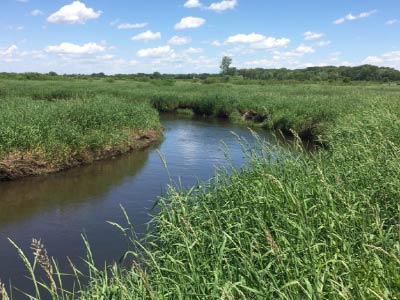
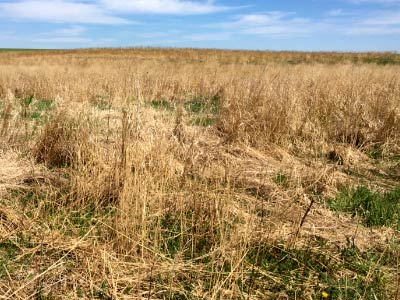
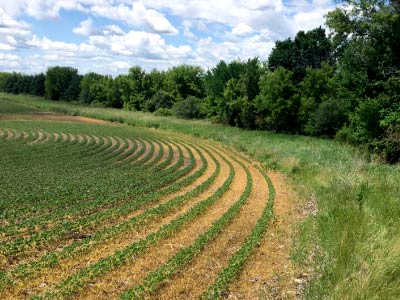
Overview:
The Minnesota Buffer Law was signed into law in 2015 and amended in 2016 and 2017. It requires buffers of perennial vegetation on all public waterways and public drainage ditches. The deadline for implementation for buffers on public waters was in 2017; 2018 for public ditches.
In 2017, Dakota County Board of Commissioners elected jurisdiction to enforce State Buffer Law and amended County Ordinance 50. The amended ordinance contains specifics on how the Law will be applied and enforced within Dakota County, including the fact that buffer averaging and alternative practices will not be permitted within the County (e.g. buffers must meet or exceed the minimum width along their entire lengths.) The role of the Dakota County Soil & Water Conservation District (SWCD) is to assist the County in monitoring and tracking compliance, and to provide landowners with technical assistance with seeding, flagging, and general questions.
Monitoring and Compliance:
All parcels in the county are to be reviewed within a 3-year time frame. Dakota County SWCD staff, in partnership with Dakota County who also administers buffer requirements under local ordinances, strive to inspect all parcels every year. However, at a minimum, 1/3 of the parcels countywide will be inspected each year based on the attached map. Parcels will be inspected for compliance with Buffer Law requirements as specified within Dakota County Ordinance 50.
Why Buffers?
Studies from the MN Pollution Control Agency show that buffers are critical to protect water quality and aquatic life, as they filter out phosphorus, nitrogen, and sediment before they reach the water. This can have crucial positive impacts on human health, as well as for wildlife and recreation. Even if you’re not required to put in a buffer on your land, you may still find it a beneficial option, and the Dakota SWCD can offer cost-share assistance for projects that aren’t mandatory under state law.
FUNDING SOURCES
INCENTIVE PAYMENT PRACTICE (IPP) AND NATIVE PRAIRIE RESTORATION (NPR)
More Resources:
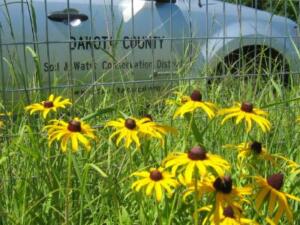 Create Beautiful and Valuable Native Habitat
Create Beautiful and Valuable Native Habitat
This Dakota County SWCD cost-share program makes funds available for the restoration of native prairie vegetation on your land. Pre-settlement, prairie covered a large portion of Dakota County. Planting native prairie plants offers a wide range of benefits. Native prairie species have deep roots that help water infiltrate through the ground (filtering and recharging our groundwater supplies) and stabilize the soil, reducing erosion. This in turn protects local water quality, as stormwater runoff is naturally treated and filtered before reaching bodies of water. Native plants’ seeds and stems provide food and habitat for birds and wildlife throughout the seasons. In addition, planting native wildflowers provides valuable pollinator habitat. Pollinators are necessary for human life and for stable ecosystems, but many pollinator species in Minnesota are at risk. Planting diverse swaths of native plants is crucial for the recovery and long-term survival of healthy pollinator populations. Restored native prairies are also beautiful, and they require fewer inputs and labor over time once they’re established.
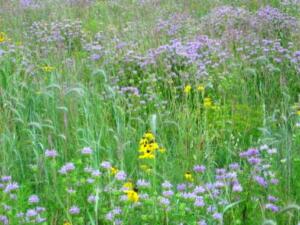 If you have 1/2 acre or more that you’d like to restore to native prairie, you may be eligible for funding under the incentive Payment Practices Program. Landowners can receive cost-share funding for up to 85% of the total project costs for the installation or enhancement of native prairie vegetation. Maximums per acre depend on the type of project and planting:
If you have 1/2 acre or more that you’d like to restore to native prairie, you may be eligible for funding under the incentive Payment Practices Program. Landowners can receive cost-share funding for up to 85% of the total project costs for the installation or enhancement of native prairie vegetation. Maximums per acre depend on the type of project and planting:
Up to $1,500/acre for the enhancement of existing native vegetation with more pollinator-friendly species
Up to $2,500/acre for the installation of native prairie grasses
Up to $4,000/acre for the installation of native prairie vegetation that includes grasses and pollinator-friendly forbs
PROJECT PRIORITIES
- Stabilizing erodible soils
- Filtering runoff to waterways or wetlands
- Protecting groundwater
- Improving wildlife habitat, particularly for pollinators.
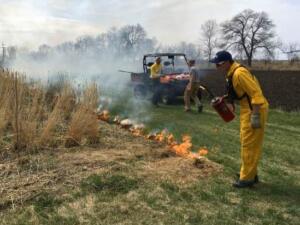
PROJECT EXAMPLES
- Site preparation, seed, and planting of native vegetation
- Enhancement of existing native vegetation with pollinator species
PROJECT TIMELINES
- Site prep can take a full growing season based on existing site conditions
- Prairie takes about 3 years to become established
- Occasional maintenance may include prescribed burning and spot treating invasive species. SWCD staff can assist with identifying plants and suggest management tasks.
- Prairies are ever-changing and fun to watch change from year to year!
All project applications are subject to available funding and SWCD Board approval. Funding is based on a percentage of the actual installation costs. SWCD staff will work with landowners to create a restoration plan specifically for the site conditions.
Please contact us at 651-480-7777 / Email: Dakota County SWCD
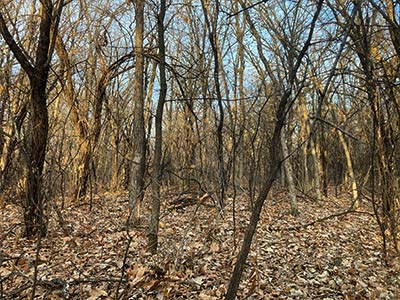
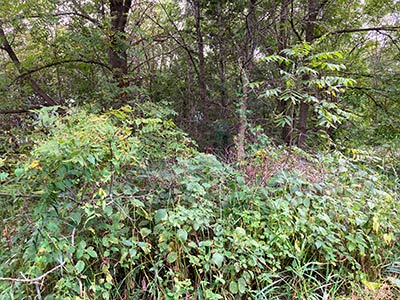
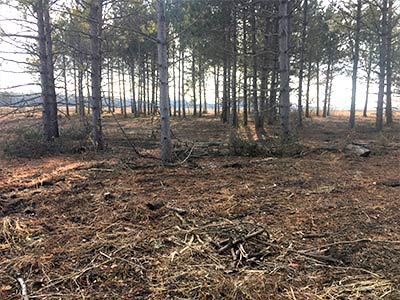
Dakota County was primarily grassland and savanna before pre-settlement. With the removal of fire and grazers like bison, trees began to outcompete the grasslands, producing what we see as much of our woodlands today.
The Dakota County SWCD has worked in partnership with Dakota County on woodland restoration projects with private landowners. These have included a variety of woodland types that exist in Dakota County, from floodplain forest to upland forest.
If you have questions about woodlands on your property, please contact us at 651-480-7777 / Email: Dakota County SWCD
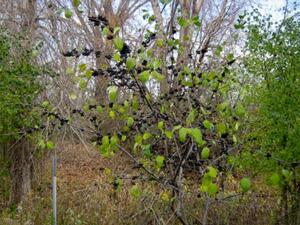
BUCKTHORN
Buckthorn is a real threat to our woodlands. Common, or European, buckthorn, and glossy buckthorn are the two non-native, invasive buckthorn species found in Minnesota. These buckthorn species were first brought here from Europe as a popular hedging material. They became a nuisance plant, forming dense thickets in forests, yards, parks, and roadsides. They crowd out native plants and displace the native shrubs and small trees in the mid-layer of the forest where many species of bird’s nest. Glossy buckthorn has been sold by the nursery trade in three different forms, so its appearance can vary.
Common buckthorn and glossy are listed as Restricted noxious weeds in Minnesota. It is illegal to import, sell, or transport buckthorn in Minnesota.
For more information on how to manage buckthorn please visit the Minnesota Department of Natural Resources CLICK HERE.
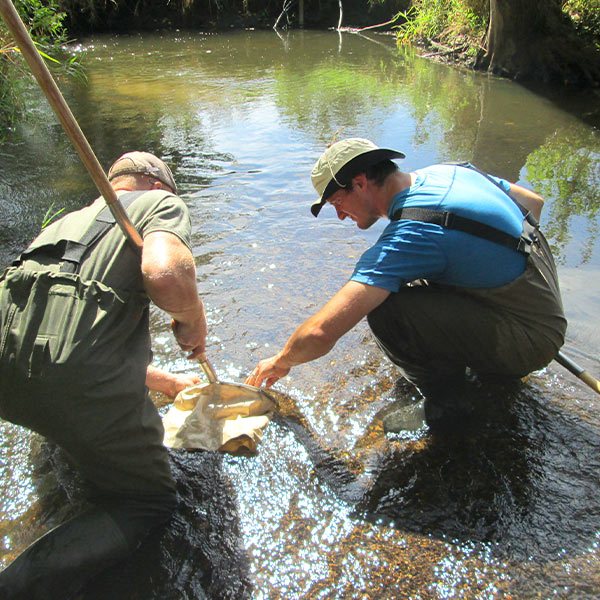
LAKES, RIVERS & WETLANDS
Water resources are abundant here in Dakota County.
Rivers and streams crisscross the landscape while many lakes and wetlands pocket suburban neighborhoods. The Dakota County SWCD conducts and supports management and monitoring activities of many of these resources, helping to ensure their protection for years to come.
Click on the categories [+] below to expand and learn more about these specific areas.
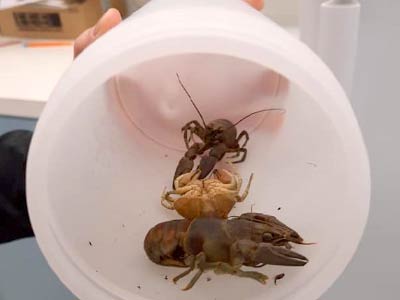

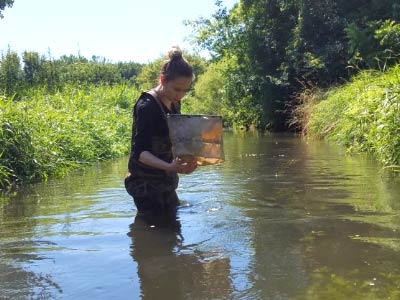
DAKOTA COUNTY AQUATIC INVASIVE SPECIES PLAN
The Dakota County Aquatic Invasive Species Plan (Plan) serves to guide the use of annual funding provided to Dakota County from the Minnesota Department of Natural Resources’ (MN DNR) Local AIS Prevention Aid program. The plan outlines the strategies utilized by the Dakota County AIS program to help prevent the spread of AIS, within the county and greater Minnesota.
Through this program, Dakota County aims to support existing monitoring and implementation efforts by local government units (LGUs), including lake associations and watershed organizations, fill gaps by monitoring waterbodies not currently covered by LGUs, assess AIS suitability within the County parks system (particularly Lake Byllesby), and promote County-wide outreach efforts. The AIS program is overseen by the Dakota County Environmental Resources Department. In 2015, the Dakota County AIS Advisory Committee (Committee) was formed to provide ongoing management, oversight, and implementation of programs supported by the state AIS Prevention Aid funding. The Committee consists of Dakota County and Dakota County SWCD staff members, with additional input from a broad range of stakeholders.
If you have AIS questions, please contact Lindsey Albright at 651-480-7783 / Email: Lindsey
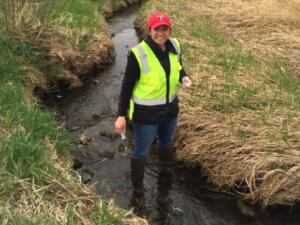 Monitoring the Water Quality of Lakes & Rivers
Monitoring the Water Quality of Lakes & Rivers
In partnership with the Vermillion River Watershed Joint Powers Organization (VRWJPO) and the North Cannon River Watershed Maintenance Organization (NCRWMO), the Dakota County Soil and Water Conservation District (SWCD) provides technical assistance with water quality monitoring.
To be able to prevent and address problems in our local water bodies, water quality and quantity monitoring efforts are critical in providing information about the status of the river, tracking of long-term trends, and identifying and prioritizing effective management actions. The Dakota County Soil and Water Conservation District provides technical assistance with surface water quality and quantity, and citizen-led monitoring to entities throughout the county including:
- Dakota County
- Dakota County Parks
- Lower Mississippi River Watershed Management Organization
- Metropolitan Council
- Minnesota Department of Natural Resources
- North Cannon River Watershed Management Organization
- Vermillion River Watershed Joint Powers Organization
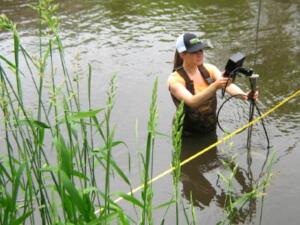 Dakota County Parks, the North Cannon River Watershed Management Organization (NCRWMO), and the Vermillion River Watershed Joint Powers Organization (VRWJPO) host a network of water quality monitoring stations to collect baseline information regarding the quality and quantity of water moving through their respective watersheds (Dakota County Parks sponsors monitoring within the NCRWMO).
Dakota County Parks, the North Cannon River Watershed Management Organization (NCRWMO), and the Vermillion River Watershed Joint Powers Organization (VRWJPO) host a network of water quality monitoring stations to collect baseline information regarding the quality and quantity of water moving through their respective watersheds (Dakota County Parks sponsors monitoring within the NCRWMO).
Monthly baseflow and storm event grab samples collected from these sites are analyzed for an extensive suite of chemical parameters. Other activities include continuous temperature and water level monitoring, and biological monitoring. Manual flow measurements and automated water level and temperature measurements are used by the Minnesota Department of Natural Resources (MNDNR) to study the relationship between surface water and groundwater within the Vermillion River watershed. These data are also used in combination with baseflow and runoff event-based water quality samples to determine the concentration of pollutants across a variety of flow regimes and help staff understand what is happening in the watershed and set goals for a stream to meet or maintain its designated use criteria. All surface water data are submitted to the Minnesota Pollution Control Agency (MPCA) annually and then reviewed biennially by their staff to determine if these waters are meeting their designated uses.
Dakota County SWCD staff collect surface water samples at two monitoring locations as part of the Metropolitan Council’s Watershed Outlet Monitoring Program (WOMP) – Vermillion River in Hastings, and the Cannon River in Welch. The data are used to evaluate current watershed conditions, to develop target pollution loads and/or TMDL plans, and to measure progress toward achieving pollutant reductions and improving water quality.
The Vermillion River site is of interest because these data are analyzed in conjunction with upstream sites monitored on behalf of the VRWJPO and can help identify pollutant sources and prioritize areas for management within the watershed at large.
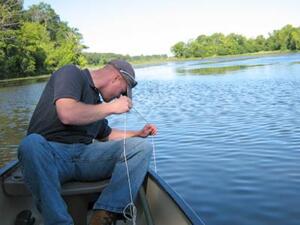 Citizen monitoring
Citizen monitoring
The Dakota County SWCD coordinates the citizen water monitoring program on behalf of the Lower Mississippi River Watershed Management Organization (LMRWMO). Each year, the LMRWMO sponsors monitoring activities on up to eight lakes as part of the Metropolitan Council’s Citizen Assisted Monitoring Program (CAMP).
Volunteers monitor a specific site on a lake on a regular basis and as part of each monitoring effort they collect a surface water sample, measure water temperature and clarity, and report weather and lake conditions. The Dakota County SWCD is an active supporter of the citizen stream monitoring program (CSMP) run by the MPCA. With this program, volunteers perform water clarity tests two times per month at designated monitoring locations. The data is used by MPCA and local water resource managers to study trends in water clarity over time and assess the health of the water body in comparison to state water quality standards.
For additional information on water quality monitoring or to get involved in citizen-led monitoring, please contact Lindsey Albright at 651-480-7783 / Email: Lindsey
View real-time river and water monitoring gages
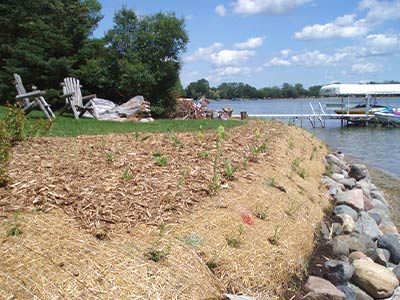
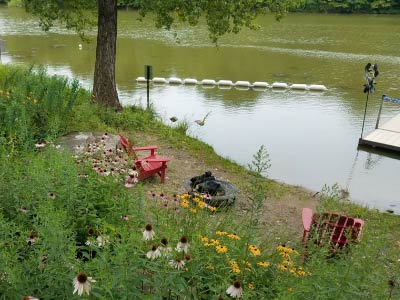

Erosion of streambanks and shorelines can significantly impact the water quality and wildlife habitat of our rivers and lakes. Historically, the solution was to place rocks, walls, or other heavy items along the shore to keep soil in place. These practices may stabilize the stream-bank or shoreline temporarily, but are often very expensive and create an area that is almost devoid of wildlife habitat and other benefits. Native shoreline stabilization or bioengineering offers an alternative to hard armoring with rock or walls. Native shoreline stabilization consists of using native vegetation and bioengineering techniques to protect the shorelines of lakes and streams. Natural materials (like native plants on shore, or strategically placed rocks or root wads from old trees placed along the bank) are used to create a self-repairing bank. A properly designed, naturalized streambank or shoreline can offer immediate stabilization, while also providing substantial wildlife habitat and water quality benefits. Native plants are strongly encouraged for shoreline stabilizations.
Native plants have deep roots that help anchor soil in place and prevent erosion, provide excellent wildlife habitat, and are adapted to local climate and soil conditions. Vegetation is one of the most important elements in the natural protection of land. Roots and stems tend to trap fine sand and soil particles, forming an erosion-resistant layer. Plants absorb some of the water’s energy, slowing down potentially erosive currents. They also act as a shoreline buffer that slows runoff entering the stream or lake and removes nutrients from the runoff. (An overload of nutrients can cause problematic algae blooms.)
Cost share programs for streambank and shoreline restoration include:
- Landscaping for Clean Water (LCW)
- Citizen Conservation Stewardship (CCS)
- Conservation Initiative Funding (CIF)
For more information on streambank and shoreline restoration please contact Joe Barten at 651-480-7784 / Email: Joe
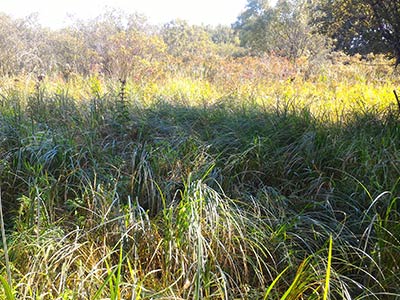
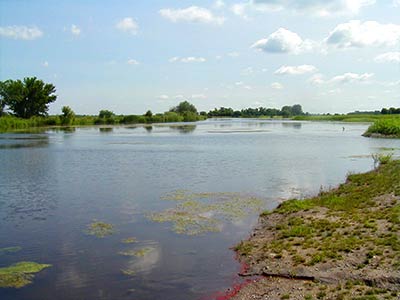
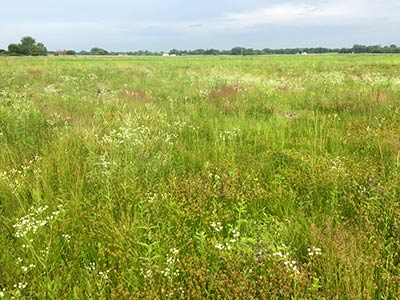
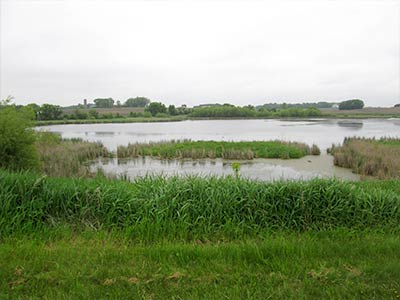
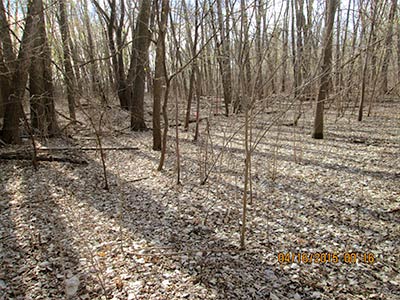
Historically wetlands were considered wasted space and drained and filled for development and crop production. In Dakota County, over 80 percent of our pre-settlement wetlands have been lost. Recognizing the important benefits of wetlands, the Minnesota Legislature in 1991 enacted the Wetland Conservation Act (WCA). The WCA gives administrative authority to local governments. The Dakota County Soil and Water Conservation District is available to assist cities, townships, and individual landowners to determine if an area is a wetland and administer the WCA.
- Contact the Soil and Water Conservation District.
- Find out if the land you want to alter is a wetland. Remember, an area can be wetland even if it doesn’t hold standing water.
- Fill out a project notification form if proposing to alter a wetland. Our office can provide you with this application form and help you determine where it should be sent.
For more information contact David Holmen at 651-480-7791 / Email: David
DNR Guide to Excavated Ponds Booklet, 2002
Online WCA Fee payments are now available on the Administrative page of our website:
AERIAL PHOTOGRAPHY SERVICES
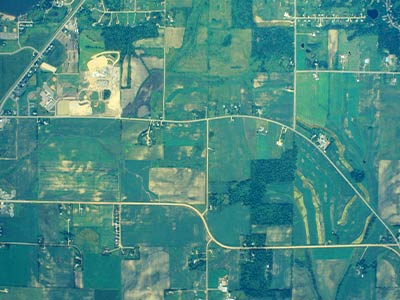
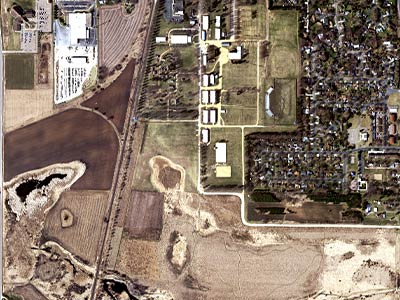
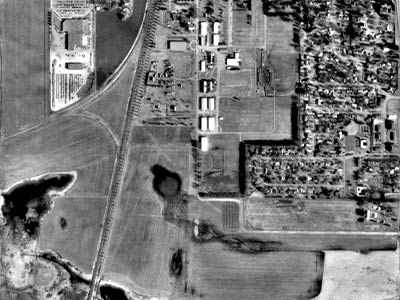
Looking for more information about Aerial Photography?

GROUNDWATER
Many programs for protecting the quality and quantity of groundwater are not directly administered by Dakota SWCD, however the SWCD plays a vital role in implementation.
Click on the categories [+] below to expand and learn more about these specific areas.
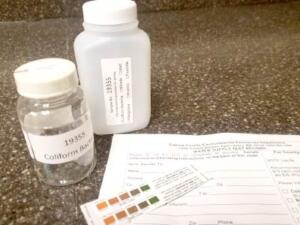 Residents can Conduct Annual Water Testing through Dakota County.
Residents can Conduct Annual Water Testing through Dakota County.
ANNUAL WATER TESTING
Water testing is an inexpensive and effective way of assuring a safe and healthy water supply. Water testing is required when there is a property transaction that includes any potable wells. When there is a property transaction, Dakota County requires that water samples be collected by an independent third party (County personnel, agent of a certified lab, well contractor or septic system compliance inspector). State and local health authorities recommend that private drinking water supplies are tested annually for total coliform bacteria and nitrate.
GET A TEST KIT
Residents interested in water testing can order a water test kit online Click Here.
The test kit consists of two bottles — one for coliform bacteria testing and one for all other testing. Water samples can be mailed back or dropped off at the Western Service Center. Choose when ordering water test kit.
WELL WATER TEST KITS ARE NO LONGER AVAILABLE FOR PICK-UP AT THE DAKOTA COUNTY SWCD.
GET A TEST KIT
Residents are responsible for the cost of tests. You are mailing your sample to a state-certified laboratory to test for the following contaminants, as you request:
- Coliform bacteria – $21
- Nitrate – $21
- Manganese – $21
- Arsenic – $21
- Lead – $21
- Fluoride – $21
- Shipping and handling –$15 (if mailing sample back) OR Sample drop off – $7
If you are interested in other potential contaminant testing, please contact Dakota County at 952-891-7000 or Email Us.
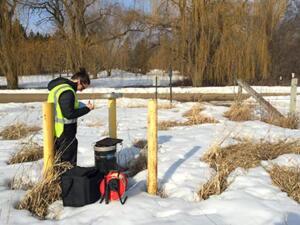 The Minnesota Department of Natural Resources (MNDNR) sponsors the Cooperative Groundwater Monitoring Program, a network of observation wells that are used to collect static groundwater-level data of different aquifers all around the state. Dakota County SWCD is contracted by MNDNR to collect well readings at various times of year in support of the MNDNR’s goals to assess groundwater resources, determine long term trends, interpret impacts of pumping and climate, plan for water conservation, and evaluate water conflicts. Data can be viewed on the MNDNR’s website. Click Here.
The Minnesota Department of Natural Resources (MNDNR) sponsors the Cooperative Groundwater Monitoring Program, a network of observation wells that are used to collect static groundwater-level data of different aquifers all around the state. Dakota County SWCD is contracted by MNDNR to collect well readings at various times of year in support of the MNDNR’s goals to assess groundwater resources, determine long term trends, interpret impacts of pumping and climate, plan for water conservation, and evaluate water conflicts. Data can be viewed on the MNDNR’s website. Click Here.
For additional information on water quantity monitoring, please contact Lindsey Albright – 651-480-7783 / Email Lindsey
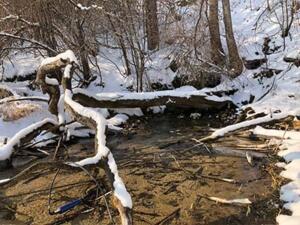 Trout Brook is a designated trout stream located in southeastern Dakota County, Minnesota. This stream has a historical data record that dates back to 1985 and is of particular interest for nitrate monitoring because it has some of the highest stream baseflow nitrate concentrations found in southeastern Minnesota (per Minnesota Pollution Control Agency). The long-term data record includes data collected at stream monitoring locations and from sentinel springs at different locations in the watershed. Monitoring data shows that nitrate levels in the Trout Brook watershed are increasing over time. Nitrate leaching is a major concern because the karst landscape in this watershed can result in contamination of shallow groundwater where private drinking water wells may be located.
Trout Brook is a designated trout stream located in southeastern Dakota County, Minnesota. This stream has a historical data record that dates back to 1985 and is of particular interest for nitrate monitoring because it has some of the highest stream baseflow nitrate concentrations found in southeastern Minnesota (per Minnesota Pollution Control Agency). The long-term data record includes data collected at stream monitoring locations and from sentinel springs at different locations in the watershed. Monitoring data shows that nitrate levels in the Trout Brook watershed are increasing over time. Nitrate leaching is a major concern because the karst landscape in this watershed can result in contamination of shallow groundwater where private drinking water wells may be located.
Dakota County Parks and the North Cannon River Watershed Management Organization (NCRWMO) contract Dakota County SWCD to collect water samples four times a year at four sentinel springs and three stream monitoring sites during baseflow conditions. Data is shared with state and university partners to support their research and management goals.
For additional information about spring monitoring, please contact Lindsey Albright – 651-480-7783 / Email Lindsey
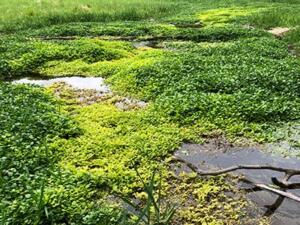 Dakota SWCD assists with the implementation of many activities within the County Groundwater Plan. This includes practices such as Irrigation Water Management and Cover Crops. The full County Groundwater Plan can be viewed on the Dakota County website. Click Here.
Dakota SWCD assists with the implementation of many activities within the County Groundwater Plan. This includes practices such as Irrigation Water Management and Cover Crops. The full County Groundwater Plan can be viewed on the Dakota County website. Click Here.
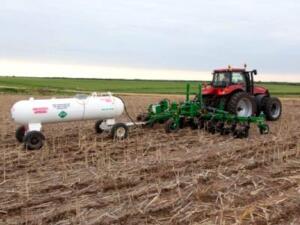 The Groundwater Protection Rule (GPR) is administered by the Minnesota Department of Agriculture (MDA). Dakota SWCD assists with coordination of the Local Advisory Team (LAT). The LAT is a group of farmers and agronomists whose purpose is to discuss and increase adoption of Best Management Practices (BMPs) that reduce nitrate leaching.
The Groundwater Protection Rule (GPR) is administered by the Minnesota Department of Agriculture (MDA). Dakota SWCD assists with coordination of the Local Advisory Team (LAT). The LAT is a group of farmers and agronomists whose purpose is to discuss and increase adoption of Best Management Practices (BMPs) that reduce nitrate leaching.
There are two parts to the rule, Part 1 is a fall restriction on nitrogen fertilizer application on areas with vulnerable groundwater and in Drinking Water Supply Management Areas (DWSMAs) with high nitrates. Part 2 focuses on DWSMAs with high nitrates. In Dakota County the Hastings DWSMA is the focus of the LAT.
Full details on the GPR and maps of applicable areas are on the MDA website. Click Here
Dakota SWCD can assist producers by directing questions to appropriate MDA staff. SWCD Staff can also assist with implementation of BMPs such as nutrient management.
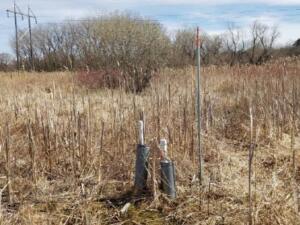 The Lower Minnesota River Watershed District (LMRWD) contracts with the Dakota County SWCD to conduct groundwater monitoring within the Minnesota River corridor. The area just upstream of the confluence with the Mississippi River, is a unique area consisting of calcareous fens – Fort Snelling fen, Nichols fen, and Quarry Island fen – intersected with small trout streams. Flora and fauna of the fens and streams rely on groundwater input to maintain water levels and provide cool water.
The Lower Minnesota River Watershed District (LMRWD) contracts with the Dakota County SWCD to conduct groundwater monitoring within the Minnesota River corridor. The area just upstream of the confluence with the Mississippi River, is a unique area consisting of calcareous fens – Fort Snelling fen, Nichols fen, and Quarry Island fen – intersected with small trout streams. Flora and fauna of the fens and streams rely on groundwater input to maintain water levels and provide cool water.
The abundance of dissolved minerals, particularly calcium carbonate, causes the water to be more alkaline (higher pH), a typical signature of streams and wetlands with a significant groundwater influence. This calcium-rich environment supports highly diverse and unique rare plant species. As a result of development in the area, little natural fen remains and there is concern over the quality of the fen habitat and the ability to support the wildlife that is well adapted to its unique characteristics.
Dakota County SWCD staff monitors 28 wells within the three fens on a monthly basis from March through December each year.
For additional information on fen monitoring, please contact Lindsey Albright – 651-480-7783 / Email Lindsey
The 2020-2030 Dakota County Groundwater Plan identified chemicals from row-crop farming, especially nitrate, crop herbicides and chloride, as significant drinking water issues for much of rural Dakota County. The Agricultural Chemical Reduction Effort (ACRE) intends to use voluntary initiatives to reduce those chemicals in groundwater, so they no longer pose threats to human or environmental health. The Dakota County Board of Commissioners adopted the ACRE Plan in October 2022.
Click HERE for more information about ACRE.
Click HERE for Monitoring Well Data
